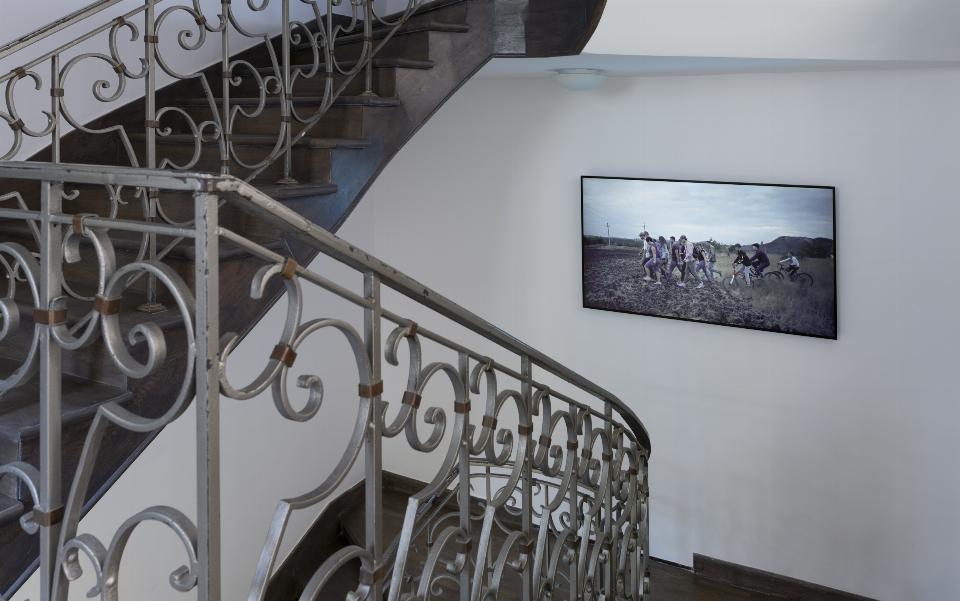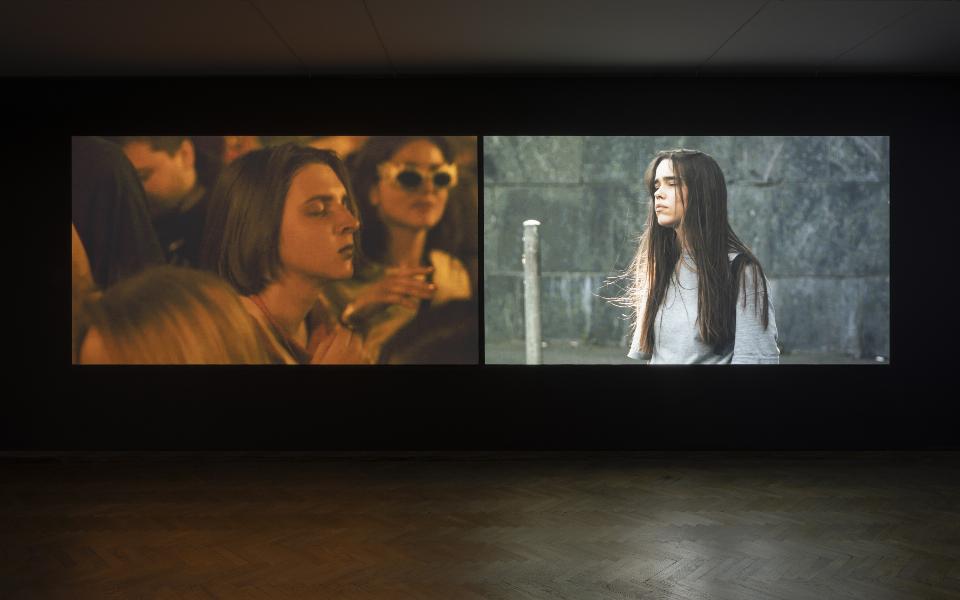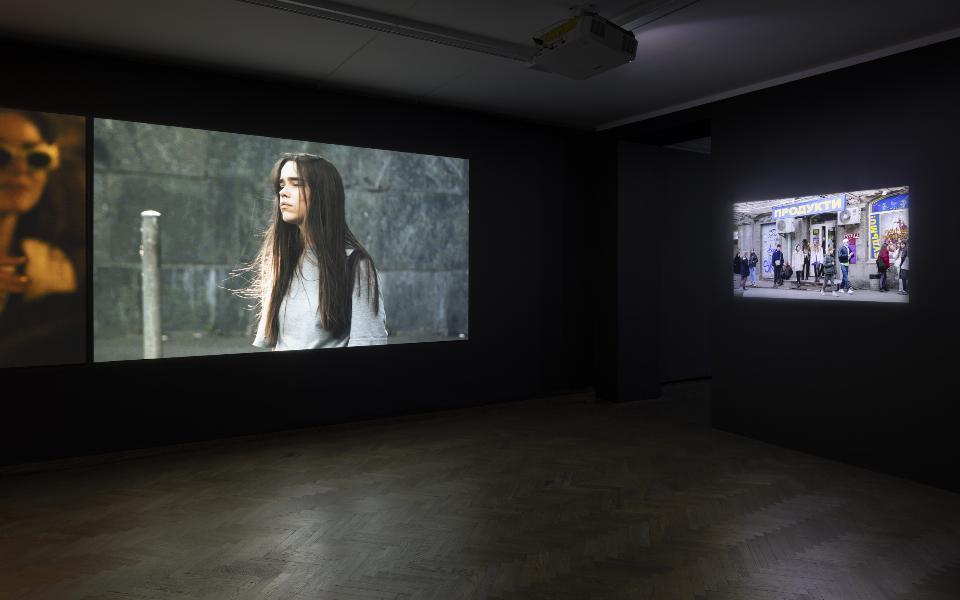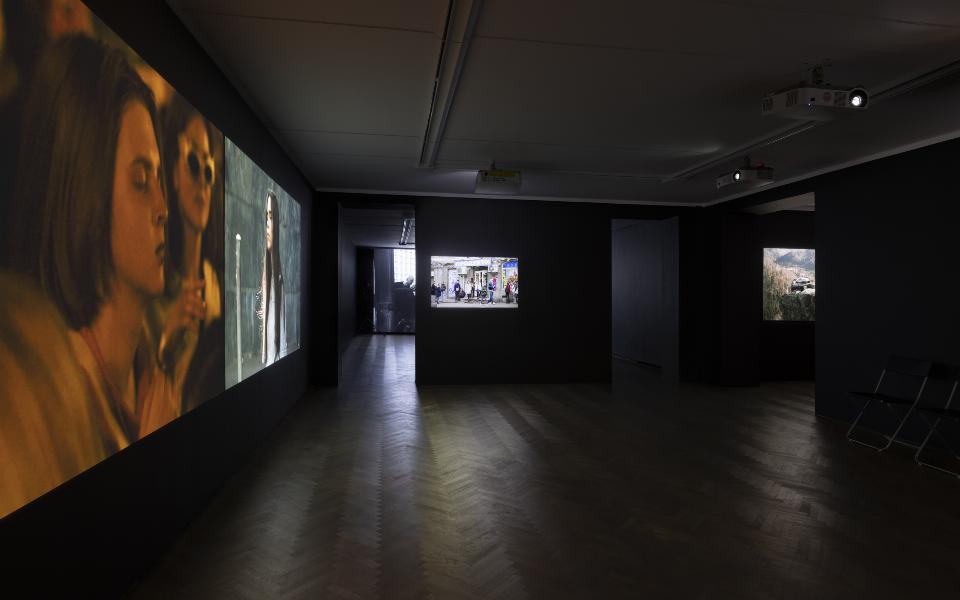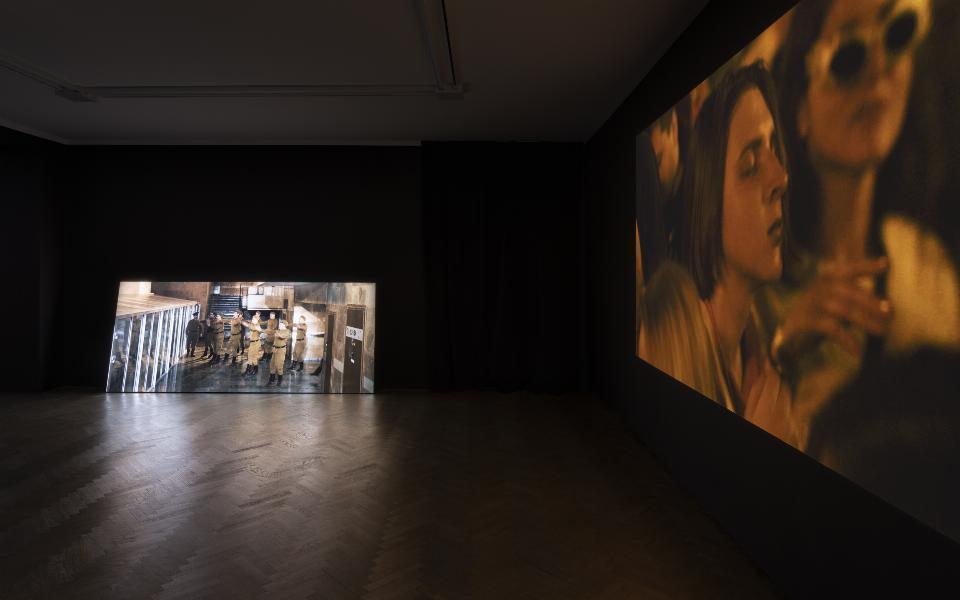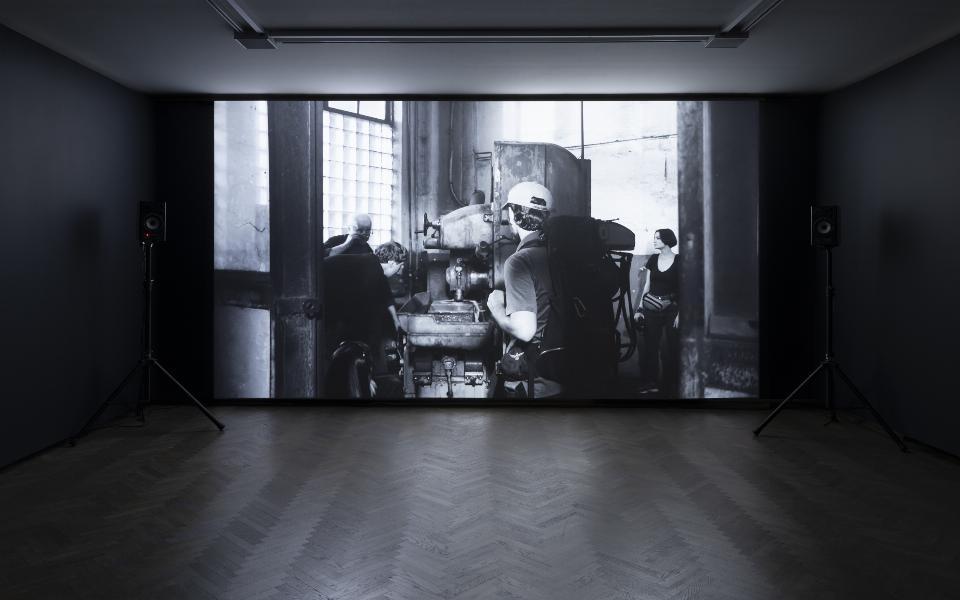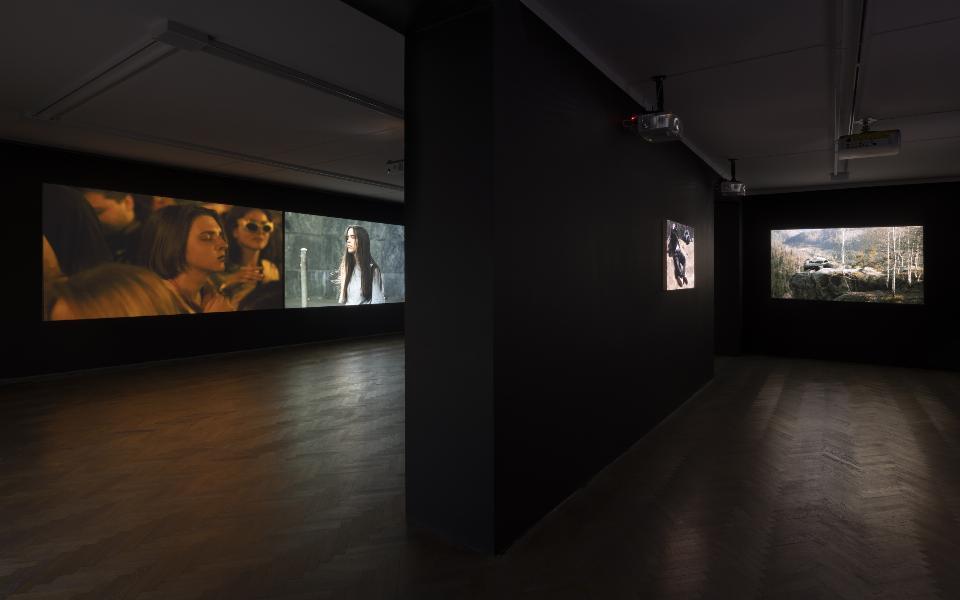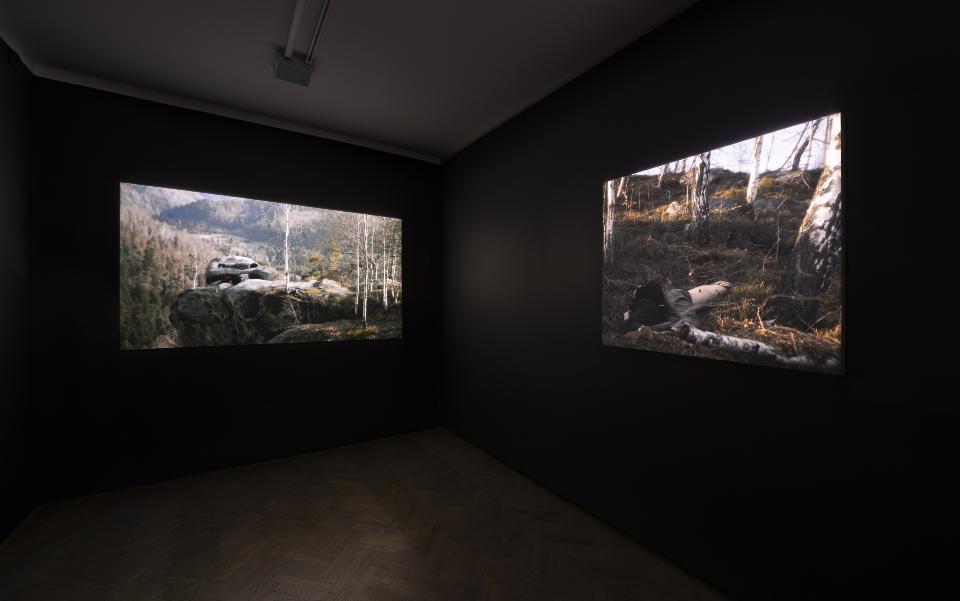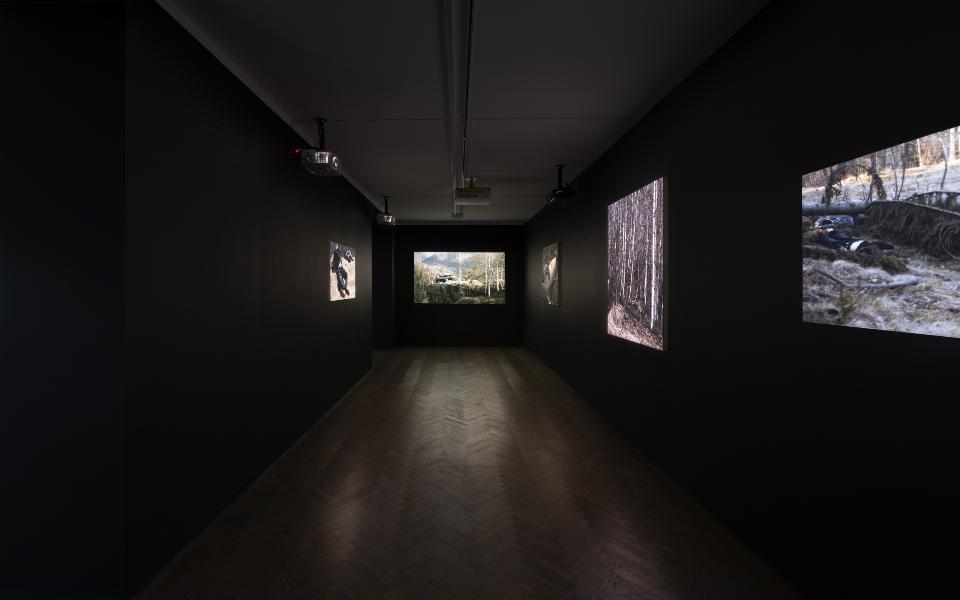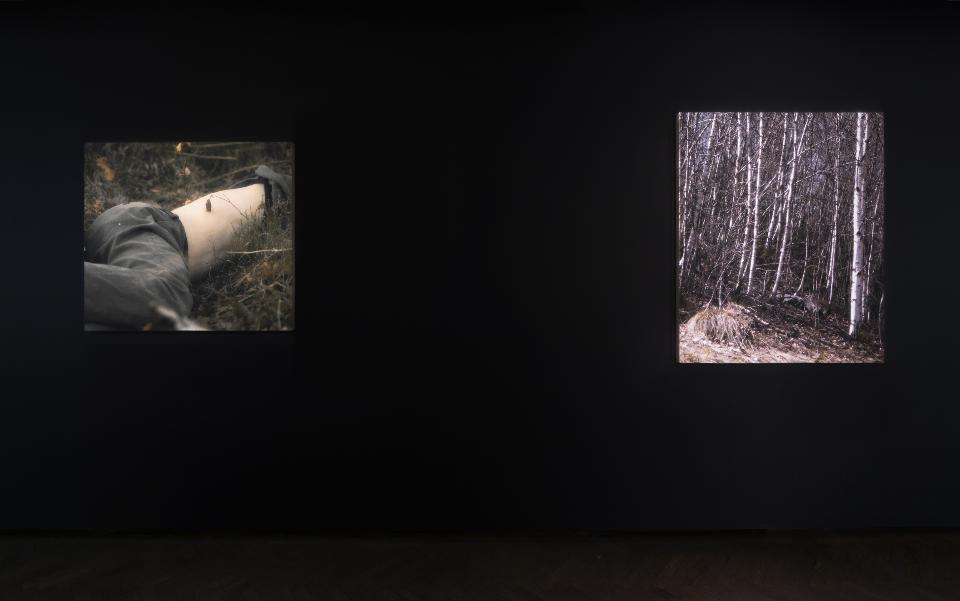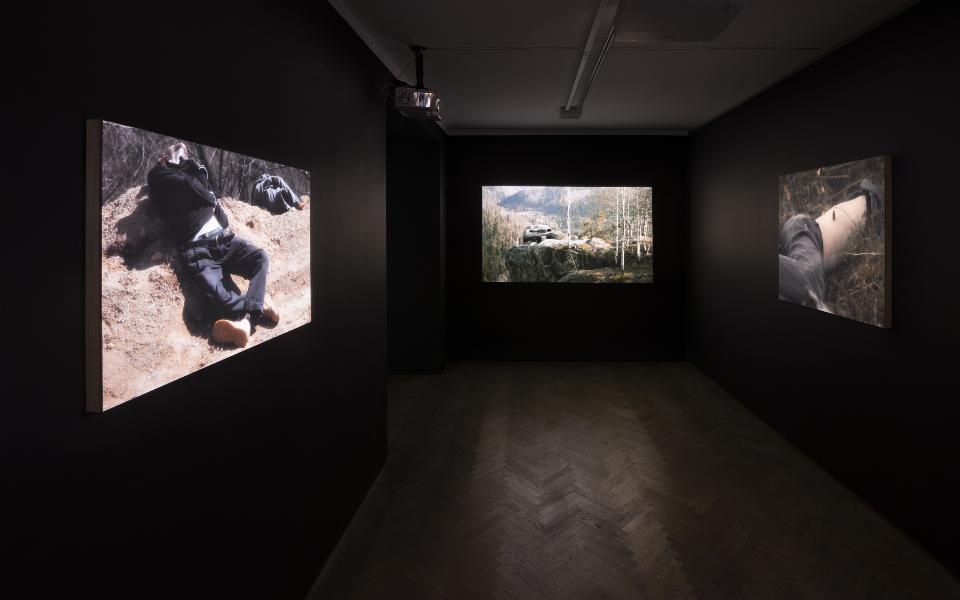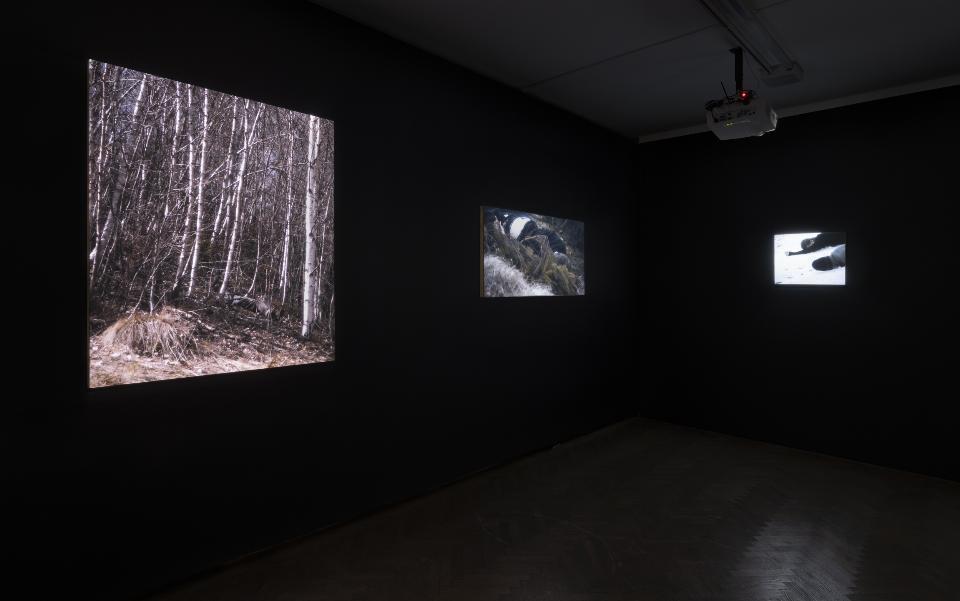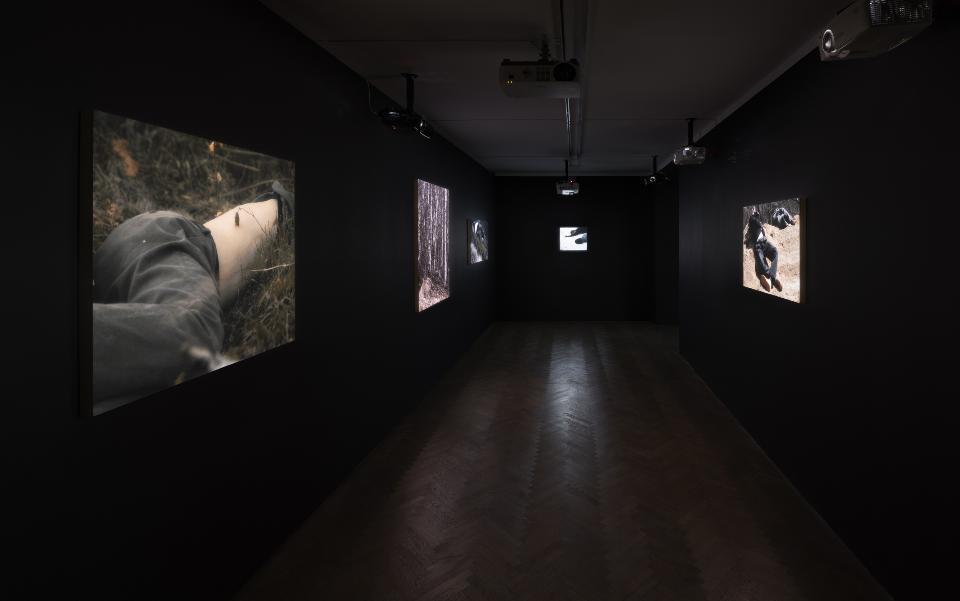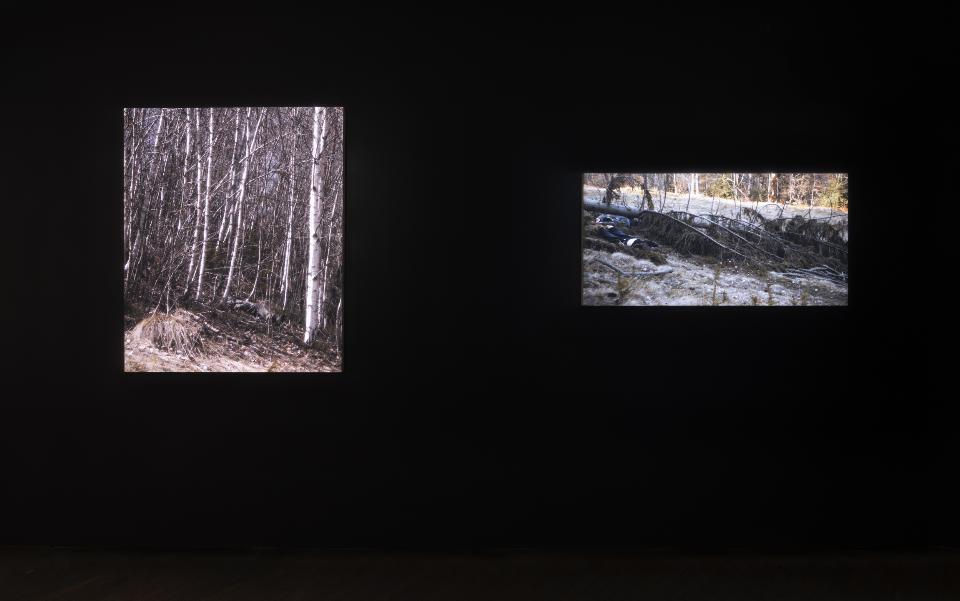Yarema Malashchuk i Roman Khimei. So They Won’t Say We Don’t Remember
Yarema Malashchuk i Roman Khimei
So They Won’t Say We Don’t Remember
Arsenal Gallery in Bialystok
15.10 – 24.11.2022
So They Won’t Say We Don’t Remember is the first solo exhibition of one of the most interesting voices of the Ukrainian art scene of the younger generation. Kyiv-based artists and filmmakers Roman Khimei and Yarema Malashchuk have been working together on the border of visual arts and cinema since 2013. The presentation will include works created between 2017 and 2022. In them, the artists look at different generations of citizens of contemporary Ukraine, their relationship with the paradigms of the past, the transformation and the uncertain future, creating a multifaceted picture of society in a country troubled by historical changes.
Roman Khimei and Yarema Malashchuk graduated as cinematographers from the Institute of Screen Arts in Kyiv, Ukraine. They were awarded the main award of the PinchukArtCentre Prize (2020), VISIO Young Talent Acquisition Prize (2021), as well as the Grand Prix at the Young Ukrainian Artists Award (MUHi 2019). Their debut documentary feature “New Jerusalem” premiered at Docudays UA International Film Festival 2020. The film received the Special Mention Award at Kharkiv MeetDocs and the duo also participated at the Future Generation Art Prize 2021. Their video works are in collections of Frac Bretagne, Fondazione In Between Art Film, and Seven Gravity Collection. Yarema and Roman are members of the Prykarpattian Theater art collective.
As a result of Russia’s invasion of Ukraine, Poland currently hosts more than a million Ukrainian refugees. Among other things, the new demographic situation reveals Poland’s lack of familiarity with its eastern neighbors, a result of focusing our attention on the west-situated center after 1989. The work of Yarema Malashchuk and Roman Khimei offers an opportunity to fill these gaps. For, moving between visual arts, gallery space and the language of film, the artists tell the story of relations between different generations of Ukrainian citizens, their entanglement in history and politics and between residents of its various regions.
The title of the exhibition is taken from the opening work. So They Won’t Say We Don’t Remember is a documentation of a delegated performance realized in Myrnohrad, a city located in the Donbas – a post-industrial part of eastern Ukraine. Like other towns in the area, Myrnohrad grew up over a coal mine established in the early 1950s. Artists and curators, along with local activists, schoolchildren, students, engineers, miners, teachers and other residents of the town, walk above ground along a route corresponding to one of the underground passages of the Novator mine. The procession begins where the entrance to the mine was located and stops only at a monument marking the spot where three miners lost their lives in an accident in 1977 and where their bodies remained underground. This event was also the cause of the mine’s closure. The participants of the commemorative walk choreograph their bodies to connect the topography of the city’s surface with its underground map. The title of the work on the one hand refers to memory. In the Donbas, the memory of the victims of the mine accidents was in the past a strategy of resistance to the Soviet authorities, who tried to keep them secret. On the other hand, the title points to the contemporary centro-peripheral nature of the relationship between the modernizing center and the post-industrial East of Ukraine. The words “so they won’t say…”, were often directed at Kyiv-based artists in Donbas. As Malashchuk and Khimei say, they testify to the ongoing legitimate concern of the region’s residents about the way it is perceived by the center of the country. In this context, the landscape traversed by the performance participants and carefully documented takes on special significance: the fields, wastelands and mining districts of the city, to which the procession, walking in solemnity, seems to pay due respect.
Three further works have been created in the capital Kyiv, portraying the young generation of Ukrainian citizens. Live Stream again involves choreography, this time performed by the Honorary Academic Song and Dance Ensemble of the Armed Forces of Ukraine in military clothing, reminiscent of Red Army uniforms. The video shows lengthy preparations in the lobby of the State Public Broadcasting Company of Ukraine, followed by a dance rehearsal. The actions of the performers are periodically disrupted by the movement of young people passing by. Their indifference to the scene unfolding in the center of the frame indicates that they belong to a generation no longer burdened by the trauma of the Soviet past. Presented on the adjacent wall, the two-channel projection Dedicated to the Youth of the World II documents Kyiv youth at one of the parties at Cxema. The popular rave was founded in 2014, shortly after the events of Euromaidan and Russia’s armed aggression against Crimea and Donbas. Organizers advertised it as a space “for a city looking to escape”. The escapist rave in Malashchuk and Khimei’s work is juxtaposed with long, shot at dawn, intimate shots of the faces of those participating. The beginning of a new day announces the need to confront a rejected reality. In Kyiv’s Youth Leaving the Grocery Store, the artists film the same youth outside a grocery store. Referring to a classic work of early cinema – the Lumiere brothers’ Workers Leaving the Factory – they put not workers but youth at the center, noting the change of protagonists in society. Thus, they introduce the next room of the exhibition.
How It’s Made presents the Promprylad factory in Ivano-Frankivsk. Undergoing all sorts of evolutions, the factory had existed there since the beginning of the 20th century, exerting a significant influence on the formation and development of the city. During the Soviet era, it became one of the great labor establishments, having its own radio, newspaper, football team, choir, dance and theater groups. Yarema Malashchuk and Roman Khimei film the factory during another historic transformation. The buildings of the former factory are undergoing a widely promoted renovation, led by new investors aiming to end the post-Soviet phase of its history and create space for a new creative industry. The artists show the place in transformation along with the people working there, coming from both the old and new order. Workers and engineers gradually give way to employees of IT companies, architectural offices and fashion brands. The second part of the two-channel projection follows the workers exiting the factory and blending into the contemporary city.
The Wanderer, the latest of the works in the exhibition, was created this year, after the Russian invasion of Ukraine began. In it, Yarema Malashchuk and Roman Khimei recreate the fallen Russian occupiers of Ukraine. With this gesture, the artists refer to a classic work of contemporary Ukrainian art – the series of photographs If I Were a German made by Fast Reaction Group in 1994. Today, Ukrainian artists, referring to the title of this historical work, ask questions about the German and more broadly Western gaze on the Russian war in Ukraine. The title of the work, the choice of frames and the way in which Malashchuk and Khimei’s work is presented, meanwhile, allude to Caspar David Friedrich’s famous Romantic painting The Wanderer at the Sea of Fog and to the colonizing attitude of the figure depicted therein toward the landscape spread out before him. Artists criticize not only the romantic image of death as something solemn. Placing the bodies of fallen Russian soldiers in this context simultaneously points to them as the current colonizers of Ukraine and takes revenge on them, breaking the taboo associated with depicting the bodies of the dead.
Katarzyna Różniak-Szabelska
Curator: Katarzyna Różniak-Szabelska
PLAN YOUR VISIT
Opening times:
Thuesday – Sunday
10:00-18:00
Last admission
to exhibition is at:
17.30
